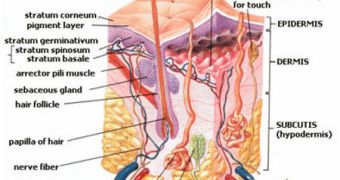Scientists know that the human brain is far from being decoded, and as such remains one of the most mysterious constructs in nature today. But they had no idea that it also processed impulses from the skin, when transforming electrical signals from the ears into the auditory sensation. Though that might seem improbable at first, this was the conclusion that a new scientific study came to, after analyzing the behavior of several test subjects inside the isolated settings of a lab, LiveScience reports.
These amazing conclusions are based on results obtained from volunteers that were asked to listen to a row of syllables, while at the same time experiencing air being puffed onto their skins. The researchers concluded that the brain must be processing information from all our senses, when it constructed an image of our surroundings, even if it was just an auditory one. The new investigation adds even more proof to a growing body of pieces of evidence, which challenges established knowledge of how the human cortex processes stimuli, and projects the surrounding world to our consciousness.
The new conclusions are “very different from the more traditional ideas, based on the fact that we have eyes so we think of ourselves as seeing visible information, and we have ears so we think of ourselves as hearing auditory information. That's a little bit misleading. A more likely explanation is that we have brains that perceive rather than we have eyes that see and ears that hear,” University of British Columbia study researcher Bryan Gick, from Vancouver, Canada, explains. The scientist therefore qualifies us as “whole-body perceiving machines” in the new study.
A paper detailing the findings appears in the November 26 issue of the respected scientific journal Nature. The team's work was funded through grants from the National Institutes of Health (NIH), and the Natural Sciences and Engineering Council of Canada. The study was conducted so that the experts could discover what they termed to be the root of perception. This is one of the main reasons why they selected two seemingly unrelated senses, the tactile and auditory ones, to test their hypothesis. The next step in the investigation is to determine how the cortex is capable of such multi-sense integration.

 14 DAY TRIAL //
14 DAY TRIAL //